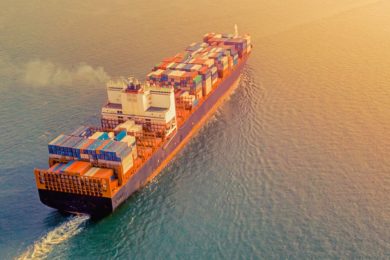05/02/2020 News
New International Maritime Organization heavy fuel oil regulations could have knock on effects on remote mines

The International Maritime Organization (IMO) has driven a rapid transformation of the shipping industry with the enforcement of a 0.5% cap to the sulphur content of fuel oil, a significant cut from the prior level of 3.5%. Effective January 2020, the regulation serves as a measure to reduce sulphur oxides (SOx) and particulate matter (PM) emissions from ships. This regulation may seem to impact only the shipping industry, but looking deeper, fuels major Total warns that there is a potential secondary impact on in-land activities, especially on Pacific Islands where HSFO is still widely used by electricity producers, and therefore it will affect many remote mining companies that have their own power generation plants.
Ship owners have three options to comply. The first is to switch to Marine Gas Oil (MGO) or Very Low Sulphur Fuel Oil (VLSFO) with sulphur content of less than 0.5%. The second requires investing in a scrubber – more formally known as an exhaust gas cleaning system (EGCS). Vessels fitted with a scrubber may still continue to use High Sulphur Fuel Oil (HSFO) provided exhaust gas emissions do not exceed the equivalent of burning a 0.5% sulphur fuel. The third option is to use Liquefied Natural Gas (LNG), a fuel that is sulphur-free and therefore doesn’t emit sulfur oxides.
As the inland users including miners are not limited by the sulphur cap, it may be assumed that such companies may continue their operations as per normal using HSFO. However, Total says inland users should also stay alert, for four main reasons. Firstly, this regulation has led to a drastic change for the requirement of Heavy Fuel Oil (HFO) globally because more than 50% of the global production of HFO is used as bunker fuel. Refineries now need to adapt depending on their existing design: the low sulphur cuts from crude oil will be utilised for the production of this new 0.5% VLSFO. The former high sulphur cuts used in the manufacturing of the HSFO need to be further refined to meet this new specification, or sent through cokers or Fluid Catalytic Cracking Units (FCCU) to produce light fractions and increase the production of diesel and gasoline. However, many refineries are limited by their design, the demand and supply balance has been suddenly shifted. As suppliers try to deal with a glut of high sulphur hydrocarbon cuts, prices of 3.5%S HFO decline. At the same time, the new 0.5%S VLSFO has a pricing closer to diesel than HSFO. In summary, the major pricing parameter for HFO is indexed to the sulphur content of the fuel and the mark-up on each percentage point decrease in sulphur is now higher than in the past.
Secondly, shipping freight costs are impacted. Bunkering cost for 0.5% VLSFO is higher, ship owners are also investing in scrubbers or other new fuel strategies which further increases costs. This cost impact is compounded for inland mining users that receive their fuel by shipment.
Thirdly is the impact on quality of the HSFO itself. Currently, the market average sulphur content for HSFO is around 2.6%S which is well within the 3.5%S specification (max). This average will increase as refineries segregate cuts of fuel and remove the low sulphur fuel cuts from the high sulphur fuel cuts. As such maintenance of large engines utilising the HSFO will be affected and may also need an engine oil assessment (higher TBN engine oils) to counter the sulphuric acid formation during combustion of HSFO.
Lastly, in relation to country in-land regulations, the global trend in passenger car and transport industry has been to drastically reduce the sulphur content of fuels. This same trend has now been adopted by the IMO for the shipping industry. Country regulations are therefore also expected to become more stringent regarding the in-land usage of HFO.
“In all, there is a rapidly changing landscape towards environmental responsibility. The stringent sulphur content limits on marine fuel may be a catalyst causing industries to move towards a greener world, and there is a push for inland users to be prepared. The future is bright for 0.5% VLSFO and cleaner alternative fuels.”

